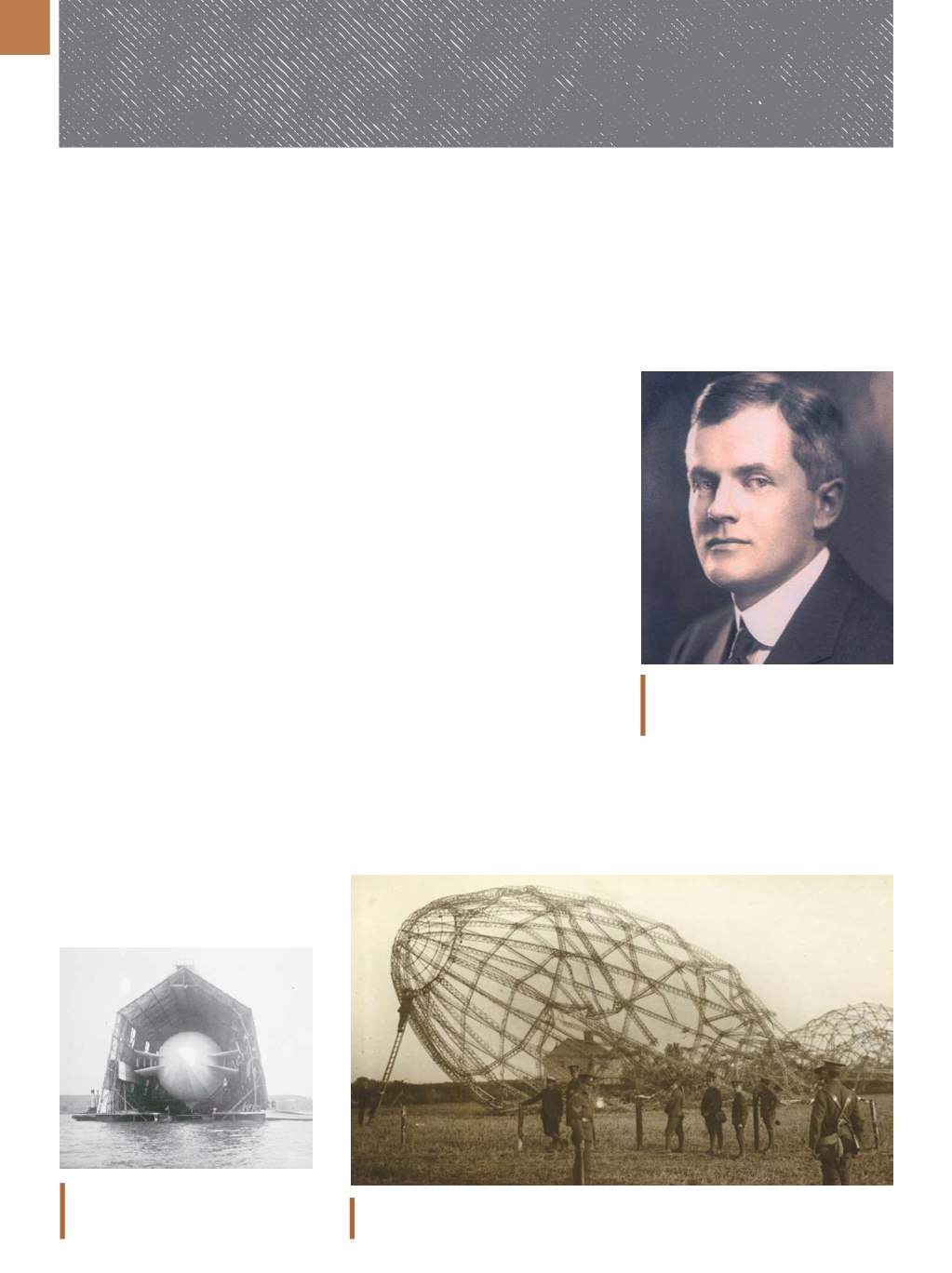

A D V A N C E D M A T E R I A L S & P R O C E S S E S | N O V E M B E R / D E C E M B E R 2 0 1 5
3 4
METALLURGY LANE
Metallurgy Lane, authored by ASM life member Charles R. Simcoe, is a continuing series dedicated to the early history of the U.S.
metals and materials industries along with key milestones and developments.
PIONEERS IN METALS RESEARCH—PART III
METALS PIONEER PAUL DYER MERICA AND HIS ASSOCIATES AT THE NATIONAL BUREAU OF STANDARDS
DISCOVERED THE PRINCIPLES THAT GOVERNED THE AGE HARDENING OF DURALUMIN.
D
uralumin, the Al-4Cu-0.5Mg alloy
invented by Alfred Wilm in the
early 1900s, was in production
during World War I in Germany, France,
and England. Germany built nearly 100
giant Zeppelins using duralumin for the
framework, while France and England
used it for limited aircraft parts. The U.S.
was behind in both military aircraft and
duralumin development, so it did not use
the alloy in these early days.
Duralumin was believed to be a
unique alloy, which could not be du-
plicated in any other alloy system.
The manner in which it aged to high
strength was a complete mystery. In
this atmosphere, the National Bureau
of Standards initiated a research pro-
gram to study the alloy’s behavior.
Paul Dyer Merica was selected to head
a small group of researchers studying
duralumin behavior during age harden-
ing. Results showed that aging in dural-
umin was not unique, but was the basis
for a new strengthening mechanism in
metal alloys that could be applied to
many alloy systems. The principle of
age hardening is widely considered the
most important metallurgical discovery
in the first half of the 20th century.
EARLY LIFE AND EDUCATION
Paul Dyer Merica was born in 1889
to Charles and Alice Merica. He was
raised and educated in Warsaw, Indi-
ana, and attended DePauw University
in Greencastle where his father had
preceded him some 20 years earlier.
After three years, Merica transferred to
the University of Wisconsin where he
received a degree in physics. He taught
physics at Wisconsin for one year and
then left the U.S. for two years to teach
at Zhejiang University in China.
After a brief return to the U.S. in
1911, he moved to Germany to enroll in
graduate studies at the Royal Institute of
Technology in Charlottenburg. Here he
was classmates with Samuel Hoyt, an
Americanwho had enteredmetallurgy at
Paul Dyer Mercia led the team that
discovered the principles governing
precipitation hardening.
The first major use of duralumin was in the
frame of the Zeppelins built in Germany for
bombing London during World War I.
A wrecked Zeppelin brought down by British aviators near the coast of Essex, September 23,
1916.
Columbia University in a course taught
by William Campbell. What we know
about Merica during his time in Germany
was written by Hoyt in his book,
Men of


















